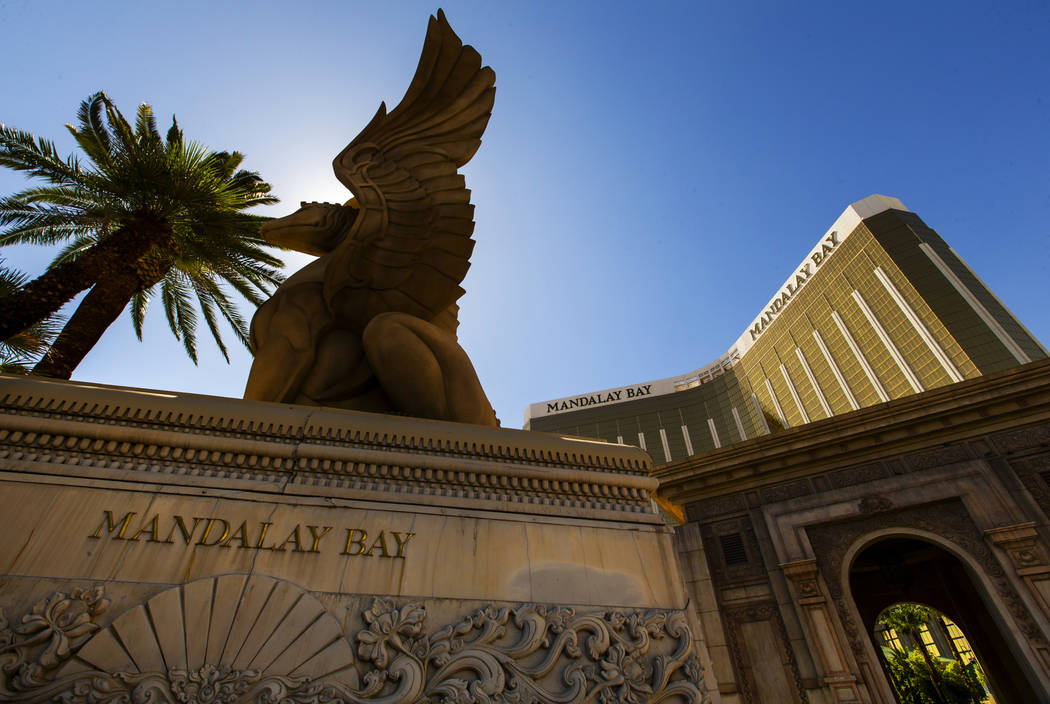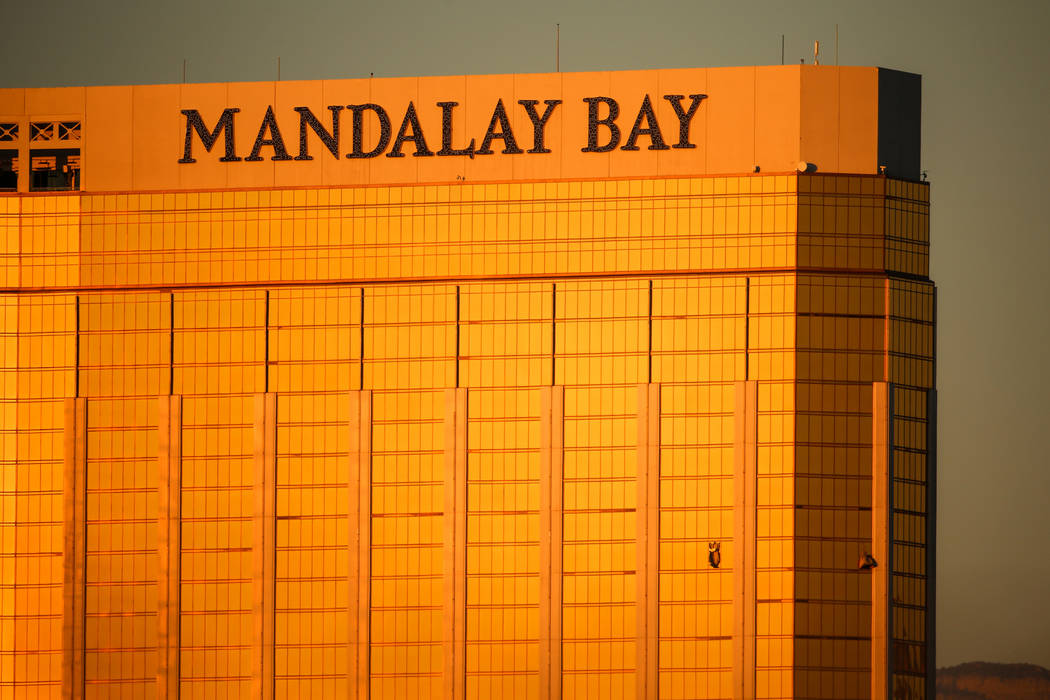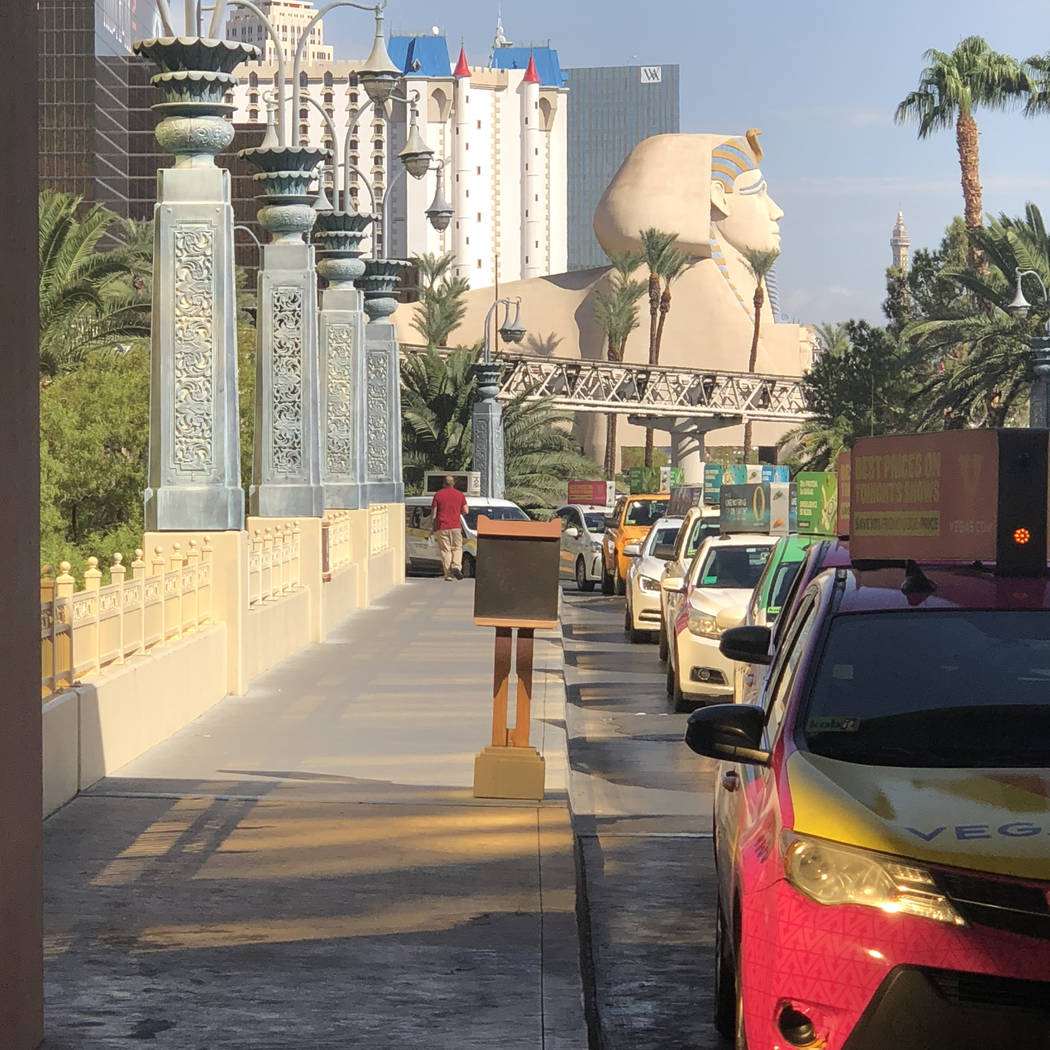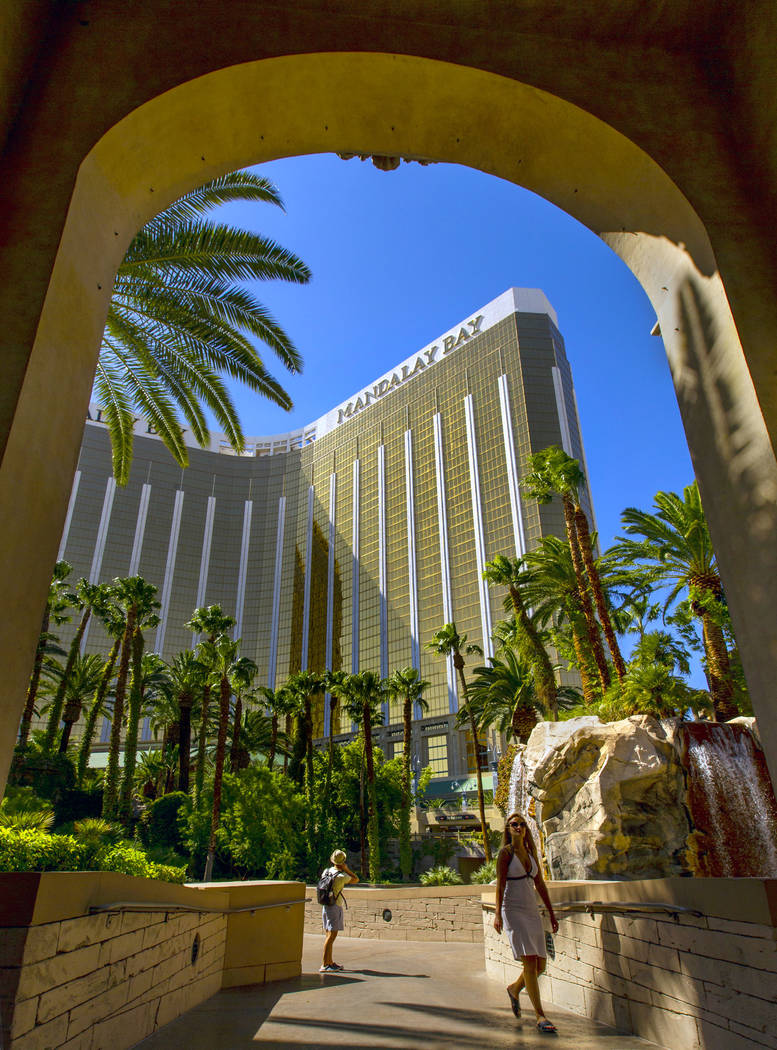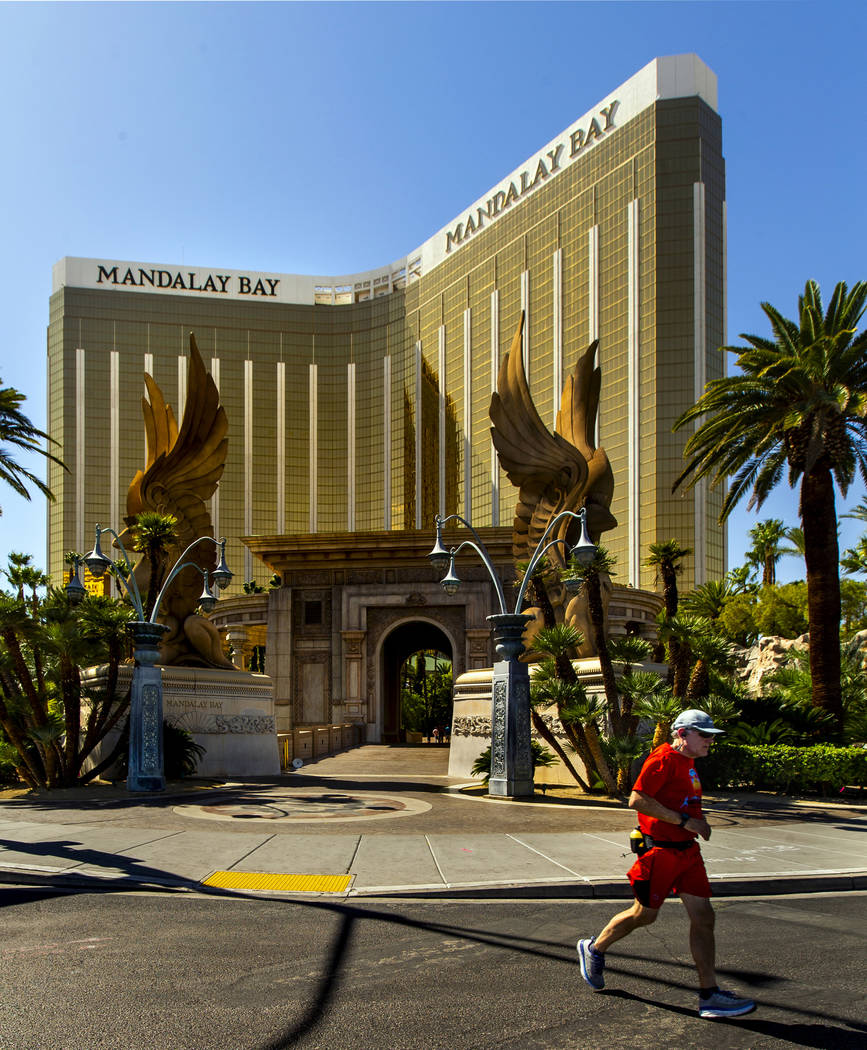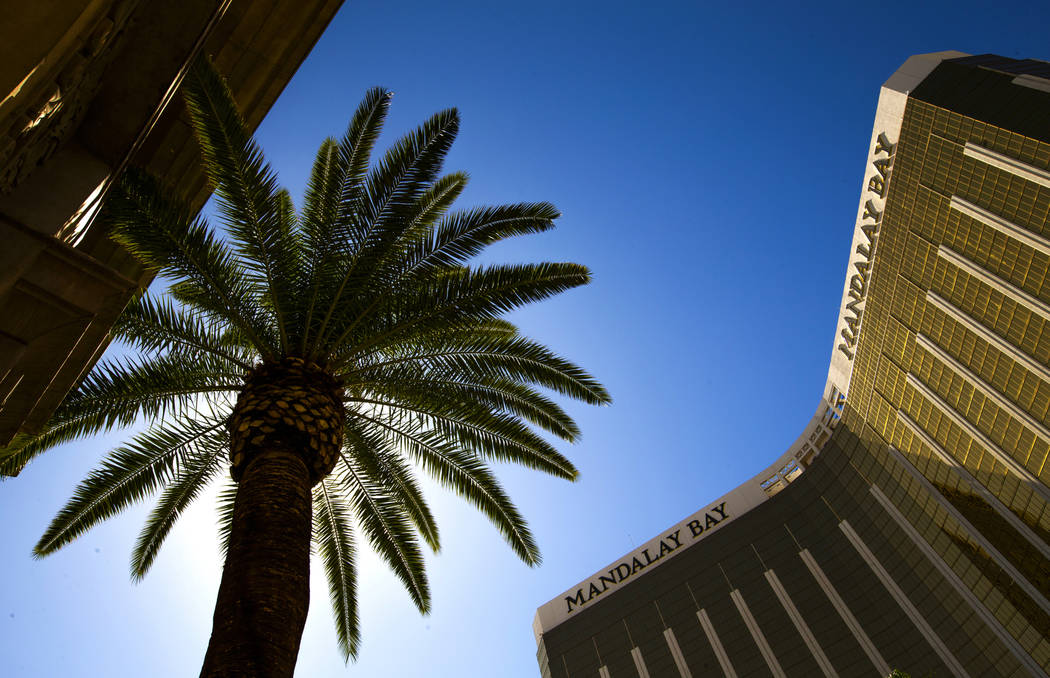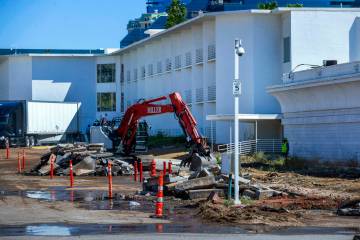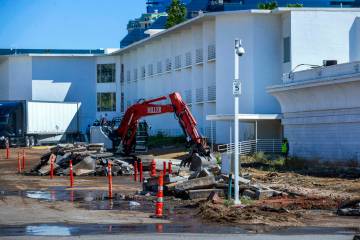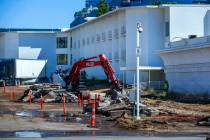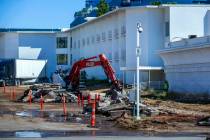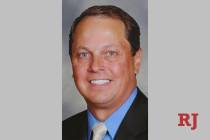After Las Vegas shooting, radio dead zones still plague Strip

This is part of an ongoing series observing the two-year anniversary of the Oct. 1, 2017, shooting at the Route 91 Harvest Festival. See all of our coverage here.
Two years after the Las Vegas massacre, resort properties on the Strip are still dotted with dead zones that make it impossible for first responders to communicate on their radios, whether during a routine call or a crisis like the Route 91 Harvest festival shooting.
On the night of the attack, several Las Vegas police officers reported issues with transmitting and receiving radio updates within Mandalay Bay, where a gunman on the 32nd floor fired more than 1,000 rounds at concertgoers. The Las Vegas Review-Journal published an investigation last year documenting some of those concerns.
In July, the Las Vegas Metropolitan Police Department also cited Mandalay Bay’s limited radio coverage as the department’s “biggest challenge” that night, noting in a report that SWAT members in a Mandalay Bay stairwell had trouble contacting their commander.
To that end, Clark County Sheriff Joe Lombardo in July said the Clark County Fire Department had since spearheaded an effort to address the “failure” and ensure that all Strip properties have adequate indoor radio coverage, which means officers and firefighters can reliably communicate within 95 percent of a building.
But two years after the wake-up call of Route 91, progress on that effort largely remains a mystery. Clark County officials in September refused to release records that may have outlined which Strip properties had achieved adequate radio coverage and which had not, arguing that the records were confidential under state law.
“If a first responder is in a building and they lose their communication, they can lose their life,” said John Foley, managing director of the Safer Buildings Coalition. “That communication is really the only lifeline that you have.”
The nonprofit coalition works to increase communication capabilities for first responders inside buildings.
“The public has to understand that if they can’t dial 911 in a building, nobody’s coming. It’s the exact same problem first responders have with their radios,” Foley said. “If there’s a solution for one, there should be a solution for the other.”
Testing reception
The effort to ensure that all Strip properties have adequate radio coverage appears to have started in April 2018, when Clark County Fire Chief Greg Cassell sent a letter to high-rise property owners on the Strip and throughout the county, asking them to conduct radio strength studies to test reception within buildings.
According to the letter, properties were asked to complete the studies by Jan. 1. If the properties did not have adequate radio coverage, owners had until July 1, 2020, to reach compliance.
The move was a first, as existing fire code only required high-rise properties built in 2009 and after to have adequate indoor radio coverage. Structures built prior to that had never been forced to comply.
Mandalay Bay opened to the public in 1999.
That doesn’t mean Las Vegas police didn’t try to encourage property owners to have adequate radio coverage anyway. But according to police officials, the properties didn’t prioritize the problem.
Then a blaze at the Westgate in August 2017 proved how dangerous radio dead zones could be. As crews worked to extinguish it, firefighters inside the building had a hard time communicating with incident commanders and fellow firefighters outside, Cassell said.
So in September 2017, fire administration and prevention officials brainstormed how to address the issue. They decided to first focus on the Westgate, then develop a plan to assess radio coverage in other high-rise properties, whether or not they were built before 2009.
Less than a month later, on Oct. 1, 2017, officers inside Mandalay Bay found themselves unable to communicate as the Route 91 attack unfolded. Fifty-eight people died, and more than 800 were wounded.
“Unfortunately, it took an event like 1 October to get this moving forward,” Barbara Doran, who heads radio logistics and 911 dispatch for Las Vegas police, said of the effort.
Complicated problem
Foley, with the Safer Buildings Coalition, said the process of retrofitting existing buildings to boost radio reception is often costly and clumsy.
“It’s a complicated problem that spans politics, economics and technology,” Foley said, “and the least of those challenges is the technology.”
The main issue always seems to be: Who is responsible?
To architects and building planners, equipment that boosts radio reception is often an afterthought, whether fire code requires it or not. And while fire officials enforce that code, they aren’t always familiar with the technology or how to test it.
Instead, that expertise typically lies with state and local communication officials, who aren’t involved in the process.
Even then, property owners are on the hook to fund the upgrades.
“That’s where the bottleneck has been,” Foley said.
It doesn’t have to be like this, Foley said. He compared radio booster technology to sprinkler systems, which architects and building planners have long accounted for.
“There’s no commercial benefit to having a sprinkler system in a building, but you do because of fire code,” he said. “Some things you do because they’re the right thing to do.”
The process is also much cheaper and easier if the technology is included in the original design, he said. Instead, the Strip is working to catch up.
No pushback
Foley noted that Chief Cassell’s effort to get all county high-rise buildings up to code is “very proactive and extraordinary in comparison to what’s happening in most of the rest of the country.”
“Much education is needed to improve local jurisdictions’ awareness of fire codes regarding building radio reinforcement and the processes and standards needed to implement the solutions,” Foley said.
Records show that Clark County fire officials in 2018 requested that 52 area properties conduct radio strength studies, including at least 28 on the Strip.
Though it’s unclear how many properties still lack adequate radio coverage, fire and police officials said all properties are participating.
“There’s been no pushback at all,” Doran said.
In lieu of county records, the Review-Journal asked each of the 28 Strip properties that the county contacted in 2018 about the status of their respective radio strength studies.
Officials with The Cosmopolitan of Las Vegas, Las Vegas Sands and Caesars Entertainment declined to comment. Officials with Tropicana, Treasure Island and Casino Royale did not respond.
Encore recently completed its radio strength study, and Wynn Las Vegas is next, a spokesman said. A Sahara Las Vegas official said the property is working with officials to meet the county’s requirements.
Brian Ahern, a spokesman with MGM Resorts International — which owns Mandalay Bay and 10 other Strip properties the county contacted — released the following statement:
“We have a close working relationship with the county and other partners and are continually evolving our procedures and technology to make them as effective as possible.”
It remains unclear if any properties already have achieved adequate radio coverage or are on track to achieve it by the July 1, 2020, deadline.
“As long as a property is showing continuous progress in complying with the fire code requirements, there will be no fines levied for the failure to meet the completion timeline,” Cassell wrote in an email.
The Review-Journal is owned by the family of Las Vegas Sands Corp. Chairman and CEO Sheldon Adelson.
Contact Rachel Crosby at rcrosby@reviewjournal.com or 702-477-3801. Follow @rachelacrosby on Twitter.
Related
Sunrise ceremony honors 58 killed in Las Vegas massacre
58 new crosses honoring Oct. 1 victims return to Las Vegas Strip
Las Vegas shooting victim works to reclaim his life
In Las Vegas shooting chaos, Metro officers saved a life
Las Vegas massacre survivors prepare others for active shooters



